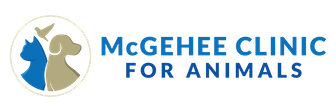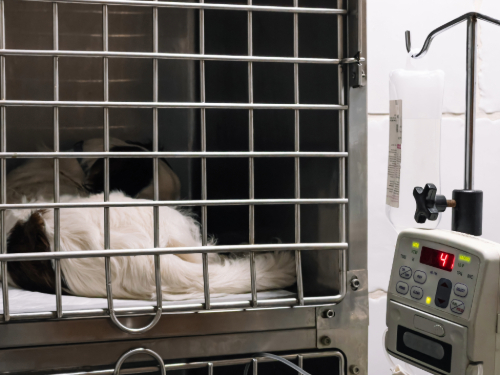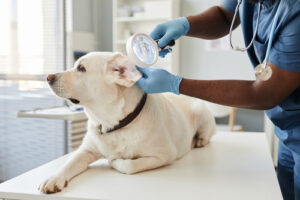When it comes to the health and well-being of our canine companions, being informed and vigilant can make all the difference. Hernias in dogs are not uncommon, and understanding their signs, diagnosis, prevention, and recovery process is vital for every responsible pet owner. In this comprehensive guide, we’ll walk you through each of these aspects, ensuring you’re well-equipped to support your dog through their hernia recovery journey. For more personalized advice or to schedule an appointment, call McGehee Clinic for Animals in Memphis, TN at (262) 658-3533.
Recognizing the Signs of a Hernia in Your Dog
Hernias in dogs can vary in severity and type, but some common signs should prompt immediate attention:
- Visible Swelling or Bulge: One of the most noticeable signs is a soft bulge or swelling under the skin, usually in the abdominal area. This bulge may be more pronounced when the dog is standing, coughing, or straining.
- Pain or Discomfort: Dogs with a hernia may show signs of discomfort or pain, especially when the bulge is touched or when they are moving.
- Changes in Behavior: Your dog may become more lethargic, less active, or show signs of discomfort like whining or restlessness.
- Appetite Loss: A dog with a hernia might lose interest in eating or have difficulty eating, depending on the hernia’s location.
- Vomiting or Nausea: In some cases, hernias can cause gastrointestinal issues, leading to vomiting or signs of nausea like drooling or licking lips.
- Difficulty Defecating or Urinating: Hernias that affect the intestines or bladder can cause problems with bowel movements or urination.
- Coughing: If the hernia is near the diaphragm, it can cause coughing or breathing difficulties.
- Change in Body Posture: Your dog may adopt a different posture, such as a hunched back, to alleviate discomfort.
- Gum Color Changes: Pale or bluish gums can indicate a serious hernia that is affecting internal organ function.
- Rapid Breathing or Panting: This could be a sign of pain or distress related to the hernia.
It’s important to monitor your dog closely and seek veterinary attention if you notice any of these symptoms. Early intervention can prevent complications and ensure a better outcome for your pet.
How is a Hernia Diagnosed in Dogs?
Diagnosing a hernia in dogs typically involves a thorough physical examination by a veterinarian. Your vet may palpate your dog’s abdomen to assess for any unusual bulges or pain. In some cases, diagnostic imaging like X-rays or ultrasounds might be necessary to get a clearer view of the hernia and its impact on surrounding organs. Early detection and diagnosis are key to managing hernias effectively, so regular veterinary check-ups are crucial.
Preventing Hernias in Dogs: Proactive Measures
While not all hernias are preventable, there are steps you can take to reduce the risk:
- Keeping your dog at a healthy weight is important, as obesity can increase the likelihood of hernias.
- Encourage regular, moderate exercise to maintain good muscle tone, especially in the abdominal area.
- For breeds prone to hernias, discuss with your vet if preventive surgical options are appropriate.
Navigating the Recovery Process: What to Expect
Recovery from a hernia can vary depending on its size and severity. In general, dogs who have undergone hernia surgery will need ample rest and limited activity for several weeks. Your vet will provide specific instructions based on your dog’s unique situation. It’s important to follow these guidelines closely to ensure a safe and speedy recovery.
Post-Surgical Care
After hernia surgery, your dog will need a quiet, comfortable space to rest. It’s crucial to prevent them from jumping or engaging in strenuous activity, which might strain the surgery site. Regularly check the incision for signs of infection, such as redness, swelling, or discharge.
Pain Management and Monitoring
Your vet will likely prescribe pain medication to help manage your dog’s discomfort post-surgery. Ensure you administer these medications as directed. Additionally, monitor your dog’s appetite, behavior, and bathroom habits, as changes in these areas can indicate complications.
Follow-Up Visits
Scheduled follow-up visits with your vet are essential to monitor the healing process. These appointments allow your vet to check the incision site, assess your dog’s overall health, and make any necessary adjustments to their care plan.
Step-by-Step Guide for a Safe Hernia Recovery
Ensuring a safe recovery from a hernia requires a comprehensive care plan. Here’s a detailed guide to help your dog through this process:
- Create a Restful Environment: Set up a comfortable area with easy access to food, water, and a bed.
- Limit Physical Activity: Avoid walks and playtime that involve running or jumping.
- Incision Care: Keep the surgical area clean and dry, and prevent your dog from licking or biting it.
- Medication Adherence: Administer all prescribed medications on time and as directed.
- Diet and Hydration: Offer a balanced diet and ensure your dog stays hydrated.
- Regular Monitoring: Watch for signs of pain, infection, or changes in behavior.
- Follow-Up Vet Visits: Attend all scheduled appointments to assess healing progress.
For more information on caring for your dog after a hernia, or if you have any concerns, please call McGehee Clinic for Animals at (262) 658-3533. Our team is here to support you and your canine companion every step of the way. Remember, timely intervention and dedicated care are key to ensuring a safe and successful recovery.





